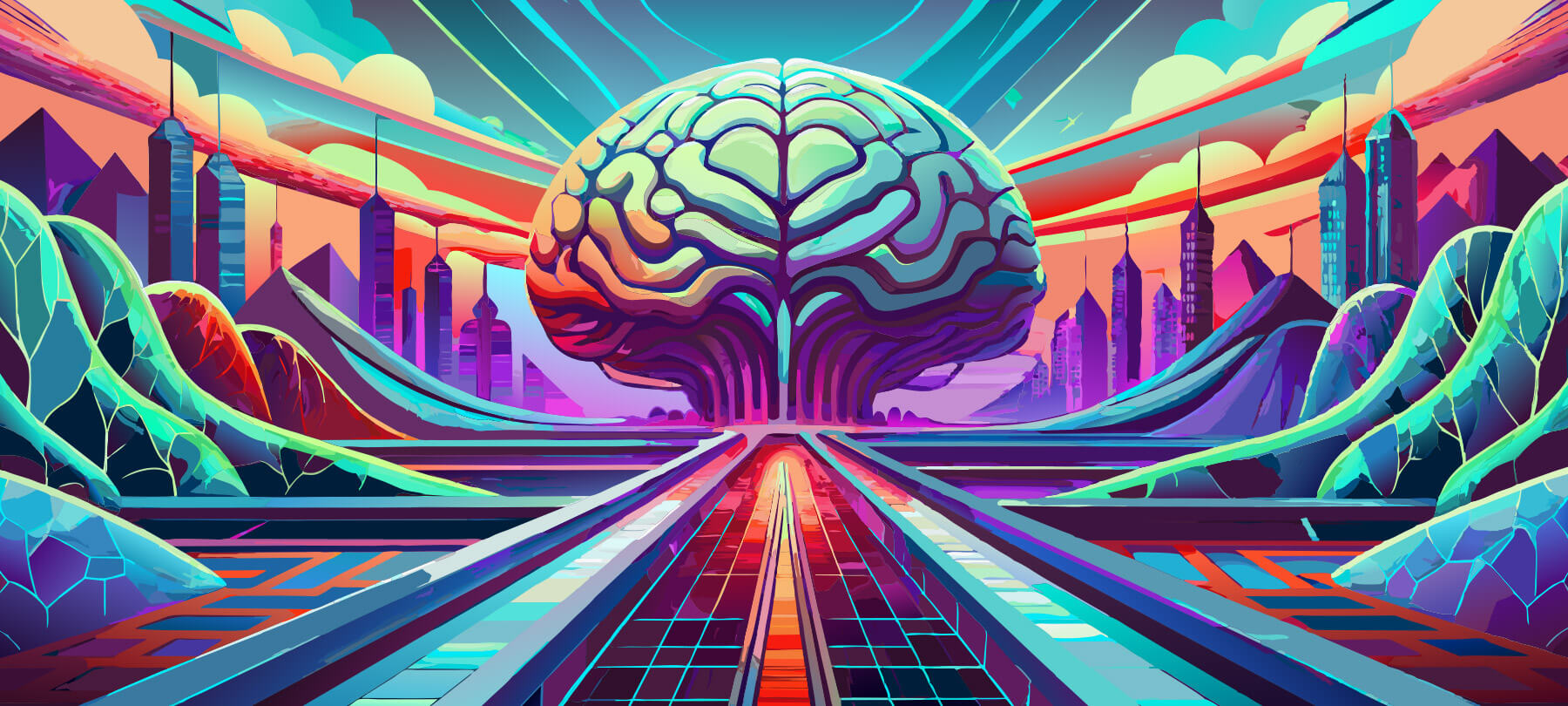
The AI-Driven Web: How Automation Transforms Our Digital Landscape
In today’s hyper-connected world, the internet has evolved from a simple network of static web pages to an intricate, intelligent ecosystem. This transformation is largely driven by artificial intelligence (AI), which is changing how we interact with technology and consume content.
AI-driven internet, faceless automated videos, and AI influencers are reshaping the digital realm in such a short amount of time. According to the CompTIA IT Industry Outlook 2024 report, more than 55% of firms already integrate AI into their business operations. So, what is an AI-driven web, and what does this mean regarding security and protecting yourself on the internet? In this four-part series, we’ll cover everything you need to know. Let’s dive in!
A Brief History of AI
Artificial intelligence, once a wild idea, has been an integral part of human imagination since antiquity, with AI-like entities shown in various mythologies and art. The 20th century transformed this concept into a tangible possibility. Thinkers like Alan Turing and Alonzo Church developed a “theory of computation,” pushing machines from mere calculators to intelligent computers. The Turing Test, proposed in 1950, aimed to determine if a machine could exhibit human-like intelligence.
Two schools of thought emerged on how to achieve AI; the “Symbolic AI” approach focused on recreating human logic within computer language, while the “connectionist approach” intended to mirror the human brain’s workings.
Artificial intelligence officially became an academic discipline in 1956 at a Dartmouth College workshop. However, technological limitations hindered progress by the mid-1970s, and AI funding was cut, leading to the “AI winter.”
The 1980s rejuvenated the waning field with “expert systems” that mimicked human decision-making, propelling AI into a billion-dollar industry. Despite several setbacks, advancements in neuroscience and cognitive psychology kindled renewed interest in the connectionist approach, leading to developing “soft computing” tools.
Today, thanks to improvements in computing speed, the increased availability of data, and advancements in machine learning, we live in an “AI-run future,” with AI research growing exponentially and its applications reaching far and wide, changing the face of society as we know it.
How AI Is Used Today
Now that we have a brief history of AI let’s look at some of the ways that AI is being used to help people, businesses, organizations, and governments. From self-driving cars to virtual assistants like Siri and Alexa, AI is making our lives easier and more convenient.
Faceless Automated Videos for Monetization
One of the most intriguing applications of AI in the digital age is the creation of faceless automated videos. These videos are generated entirely by AI, without any human actors or presenters. They are designed to capture the attention of viewers, often incorporating engaging visuals and synthesized voices.
Businesses leverage these AI-generated videos for monetization in several ways:
Content Creation at Scale
AI can produce a high volume of videos quickly and efficiently, reducing the need for expensive production teams. This allows businesses to maintain a steady stream of content to engage their audience.
Personalization
AI can tailor video content to individual preferences, increasing viewer engagement and retention. Personalized content is more likely to resonate with viewers, leading to higher conversion rates.
Cost Efficiency
Automated video production is cost-effective, making it accessible to small and medium-sized businesses. This democratizes content creation and levels the playing field.
AI Influencers: Shaping Decisions
AI-driven influencers are another fascinating development in the digital landscape. These virtual personalities are created using AI technologies and are increasingly becoming popular on social media platforms. Unlike human influencers, AI influencers are available 24/7, can be programmed to align with brand values, and never age or change.
The Impact on Consumer Behavior
AI influencers can significantly impact consumer behavior. Their ability to generate content around the clock means they can maintain a consistent presence and build h4 relationships with their followers. This constant engagement can lead to increased trust and influence over purchasing decisions.
Ethical Considerations
While AI influencers offer new opportunities for brands, they also raise ethical questions. Since AI can be programmed to promote specific products or ideas, there is a risk of manipulating consumers beyond their conscious understanding. Transparency about the nature of these influencers is essential to maintain ethical standards.
The Business Adoption of AI
According to recent surveys, 97% of business owners believe that using AI tools like ChatGPT will benefit their operations. Many have already started integrating these technologies into their business processes. The reasons for this widespread adoption include:
Enhanced Customer Service
AI-powered chatbots and virtual assistants can handle customer inquiries efficiently, providing quick and accurate responses. This improves customer satisfaction and frees up human agents for more complex tasks.
Data-Driven Insights
AI can analyze vast amounts of data to uncover patterns and insights that humans might miss. This helps businesses make informed decisions and optimize their strategies.
Automation of Routine Tasks
AI automates repetitive and mundane tasks, allowing employees to focus on more strategic and creative work. This increases productivity and job satisfaction.
Embracing the Future
The AI-driven internet is transforming how we interact with the digital world. From faceless automated videos to AI influencers, these technologies are reshaping content creation, consumer behavior, and business operations. As AI continues to evolve, it is essential to understand its history, potential, and ethical implications.



